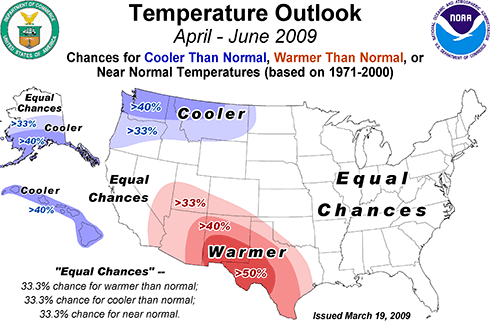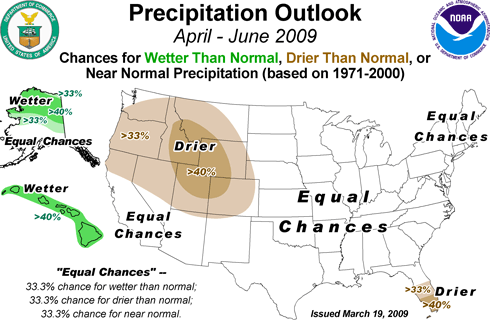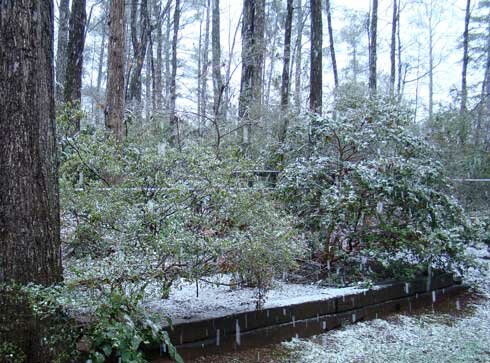NOAA Issues Spring Weather Outlook
March 21st, 2009The Weather Service has issued its outlook for spring weather - April, May and June - although some would argue that especially in the South, spring runs from March through May. In any case, the next three months don’t show a trend one way or another for most of the Southeast US.

East of the Mississippi River, there are equal chances of above or below normal temperatures. There’s a good chance of warmer than normal weather in the southwest, especially in Texas and New Mexico. The Northwest is expected to be cooler than normal, especially in Washington. Hawaii and parts of Alaska should be cooler than normal as well.

Likely wetter than normal weather is expected in Alaska and Hawaii, while there should be less than normal precipitation in south Florida, the Rocky Mountains and the Pacific Northwest. The rest of the country has equal chances of above or below normal rainfall.
Because of all the snow this winter, there is a greater than normal chance of flooding in the upper Midwest, especially along the Red River Valley. There’s also a better than normal chance of flooding along the western Great Lakes region of Michigan and northern Illinois, Indiana and Ohio.
The overall weather is considered to be in an El Nino pattern, the warm cycle of Pacific Ocean sea surface temperatures. The El Nino pattern is expected to diminish to a neutral pattern later this spring, and in any case, its effects are less pronounced in the spring and summer months. In the southeast, where El Nino tends to bring drier than normal weather, you can see this in the outlook for April, which is likely to be drier then normal, compared to the April-June outlook, which could see above, normal or below normal rainfall.
In the short term, north Georgia could see a rainy stretch starting midweek, followed by a chance of freezing temperatures at night following more rain and the passage of a cold front next weekend. Until then, however, we’ll have pleasant late March weather, so get out and enjoy it.
Sphere: Related Content

